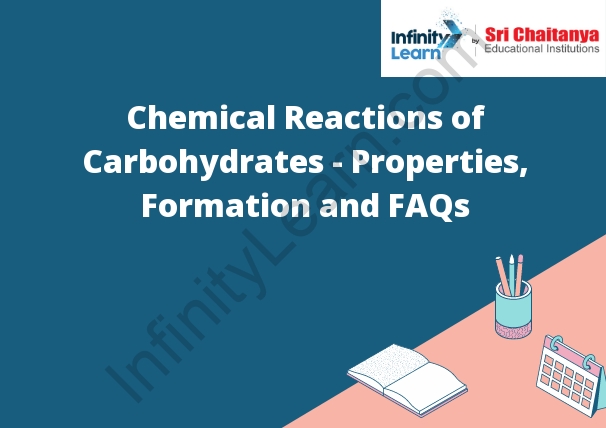Table of Contents
What are Carbohydrates?
Carbohydrates are a type of organic molecule that consists of carbon, hydrogen, and oxygen. Carbohydrates are found in all living things and are an important source of energy for the body. There are three main types of carbohydrates: monosaccharides, disaccharides, and polysaccharides. Monosaccharides are the simplest type of carbohydrate and are made up of one sugar molecule. Disaccharides are made up of two sugar molecules bonded together. Polysaccharides are made up of many sugar molecules bonded together. Carbohydrates are essential for the body to function properly and are a major source of energy.

The Chemical Reactions of Carbohydrates
The chemical reactions of carbohydrates involve the breaking of the covalent bonds that hold the molecules together. This can be done through hydrolysis, which is the process of breaking down a molecule by adding water. Enzymes are responsible for most hydrolysis reactions, and they can be found in the digestive system and in the cells of the body.
When a carbohydrate is eaten, the enzymes in the digestive system break the molecule down into individual sugar molecules. These sugar molecules are then absorbed into the bloodstream, where they are used by the cells for energy or stored in the liver and muscles for later use.
Monosaccharide – Glucose
A monosaccharide, also called a simple sugar, is a molecule composed of a single sugar molecule unit. Glucose is a monosaccharide and is a major source of energy for the body. Glucose is a simple sugar that is found in fruits, vegetables, honey, and milk. It is also the main sugar found in the blood and is used by the body for energy.
Properties of Glucose
Glucose is a sugar molecule that is found in blood and is the body’s main source of energy. Glucose is a monosaccharide, meaning it is made up of one sugar molecule. Glucose is a hexose, meaning it has six carbon atoms. Glucose is also a ketose, meaning it has a ketone group attached to one of its carbon atoms. Glucose is a reducing sugar, meaning it can donate electrons to other molecules. Glucose is soluble in water and is a sweet-tasting sugar.
Glucose Formation Reaction
The glucose formation reaction is a process by which glucose is created from two other molecules. The process begins with the combination of a molecule of carbon dioxide and a molecule of water. This creates a molecule of carbonic acid. The carbonic acid then splits into a molecule of carbon dioxide and a molecule of bicarbonate. The bicarbonate then combines with a molecule of glucose to create a molecule of glucose-6-phosphate.
Chemical Reaction of Glucose
When glucose is mixed with an enzyme called maltase, the maltose molecule is broken down into two glucose molecules. This is called a glucose reaction.
Glucose to Fructose Chemical Reaction
The chemical reaction that occurs when glucose is converted to fructose is as follows:
C6H12O6 → 2CH3CH2OH + 2CO2
Applications of Carbohydrates
Carbohydrates are found in a variety of different places. They are in many different types of foods that we eat and they are also in our body. Our bodies use carbohydrates to give us energy. We also use them to help us think and to help us move.
Some foods that have carbohydrates in them are bread, pasta, cereal, fruit, and vegetables. Carbohydrates are also in drinks like milk, juice, and soda.
Applications of Glucose
There are many medical and non-medical applications for glucose. Glucose is used as a primary source of energy by the body’s cells. It is also a component of many foods.
In the medical field, glucose is used as a treatment for hypoglycemia, or low blood sugar. It is also used as a treatment for hyperglycemia, or high blood sugar. Glucose is also used to diagnose diabetes. A blood glucose test measures the level of glucose in the blood.
In the non-medical field, glucose is used as a sweetener in food and beverages. It is also used as a fuel for vehicles.
Health Effects of Carbohydrates
The body uses carbohydrates as its main source of energy. Carbohydrates are important for the body to function properly. They are found in foods such as grains, fruits, vegetables, and milk products.
carbohydrates are important for the body to function properly
carbohydrates are found in foods such as grains, fruits, vegetables, and milk products









